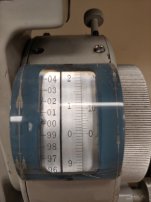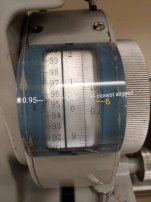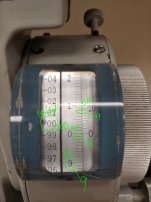toddsilvey
Plastic
- Joined
- Dec 21, 2018
I was a machinist for 17 years, and have read many micrometer scales and vernier scales and dials but I'm really struggling with knowing how to read this guy here(picture below). I can't find anything on how to read this scale. My trainer isn't explaining it in a way I can comprehend, feel like I need a book called old vernier type dials for dummies sheesh. I think it's a model A and is considered obsolete by P&W but we still use it on rare occasions and I really have to be able to read it on my own. It's making me feel really old because my brain just isn't having that AHH HAA moment yet, i'm just not getting it. Hoping somebody on here can explain it better or differently than my trainer or maybe has access to a pdf manual or something. It's supposed to be 5 place (.00001) and the current reading is supposed to be slightly off my zero mark. (.99999) I think the big wheel on the left is out of alignment so that's not helping either. I see that the the 0 to 10 scale on the right is lined up on the 9 and then I'm lost as how to get the rest. I may not even be explaining why I can't make sense of it well either. Any help would be appreciated.





